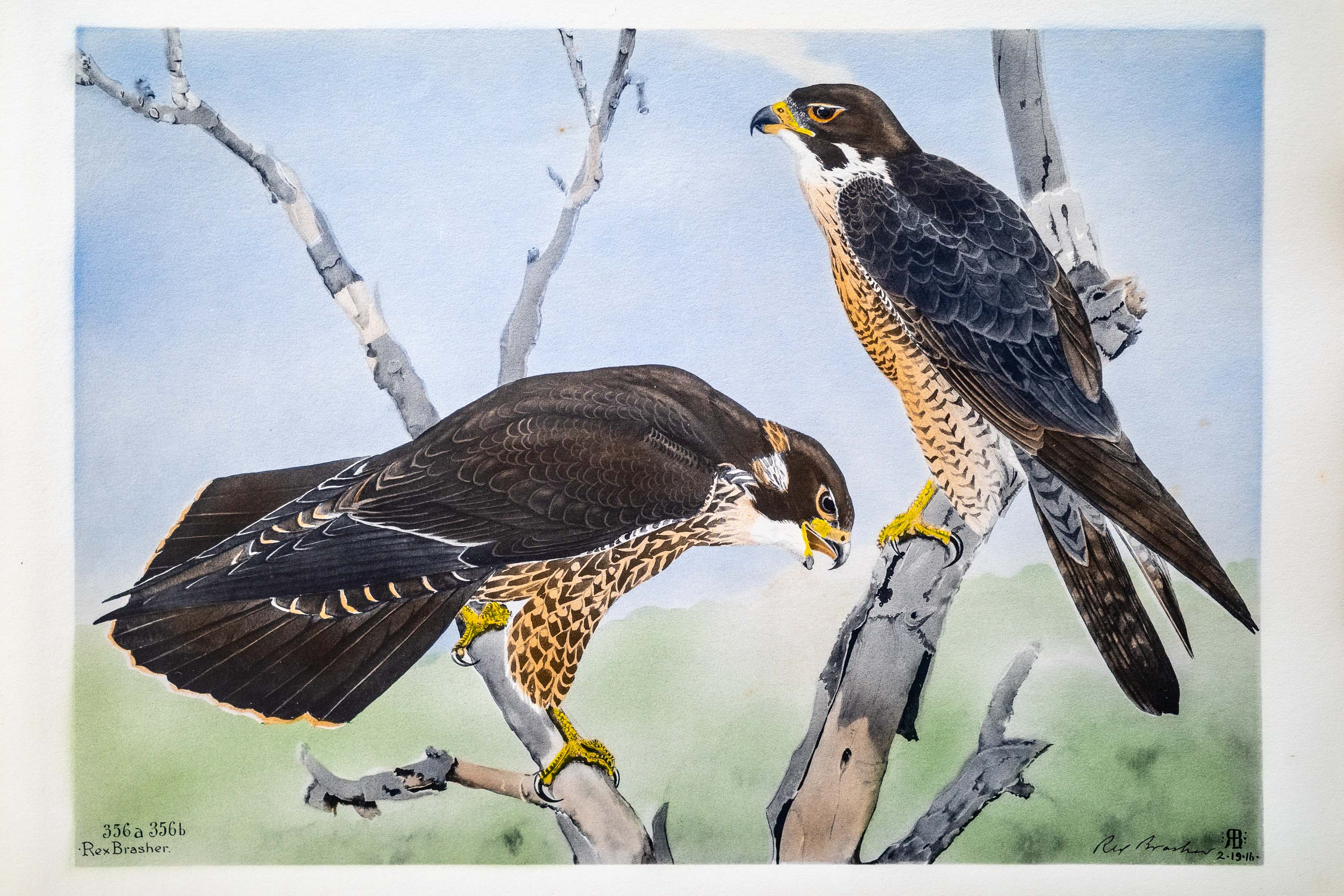
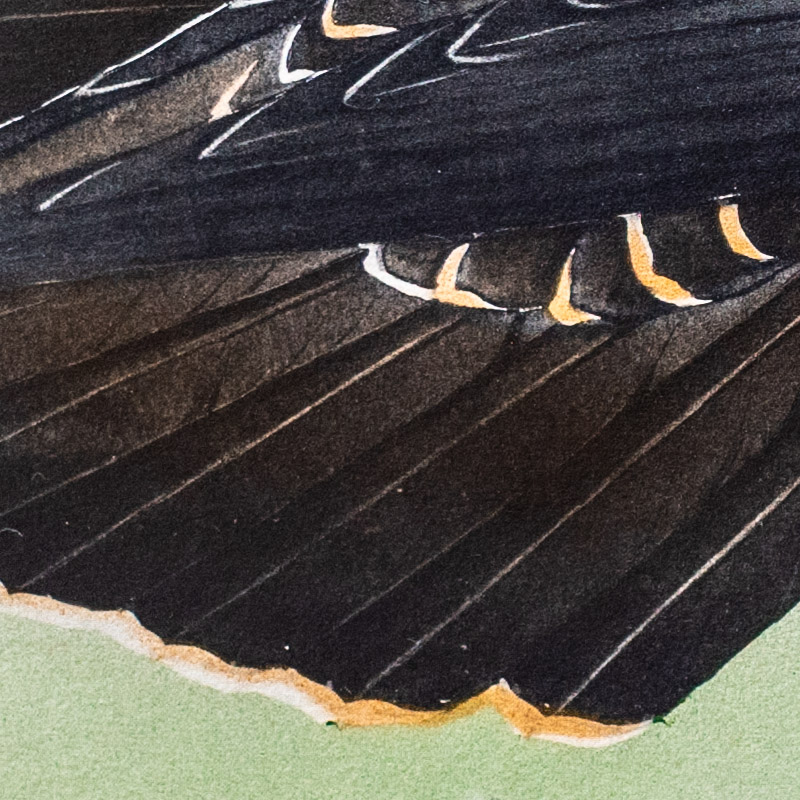

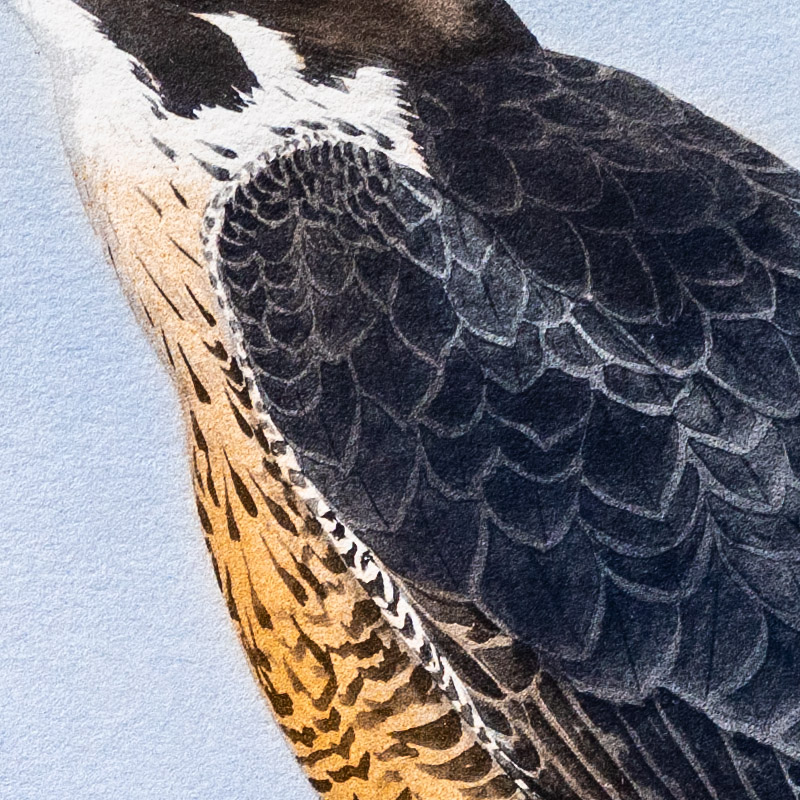
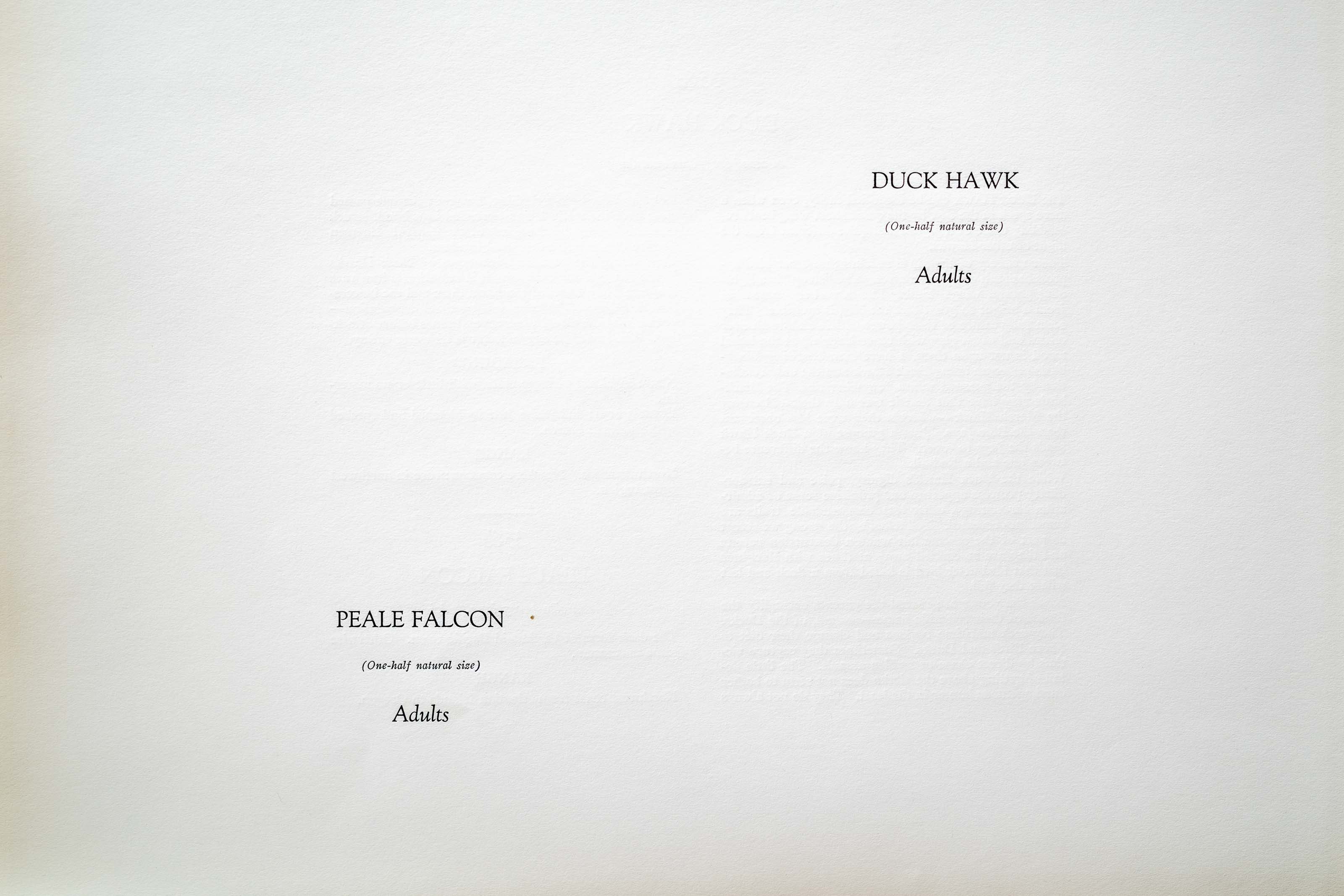
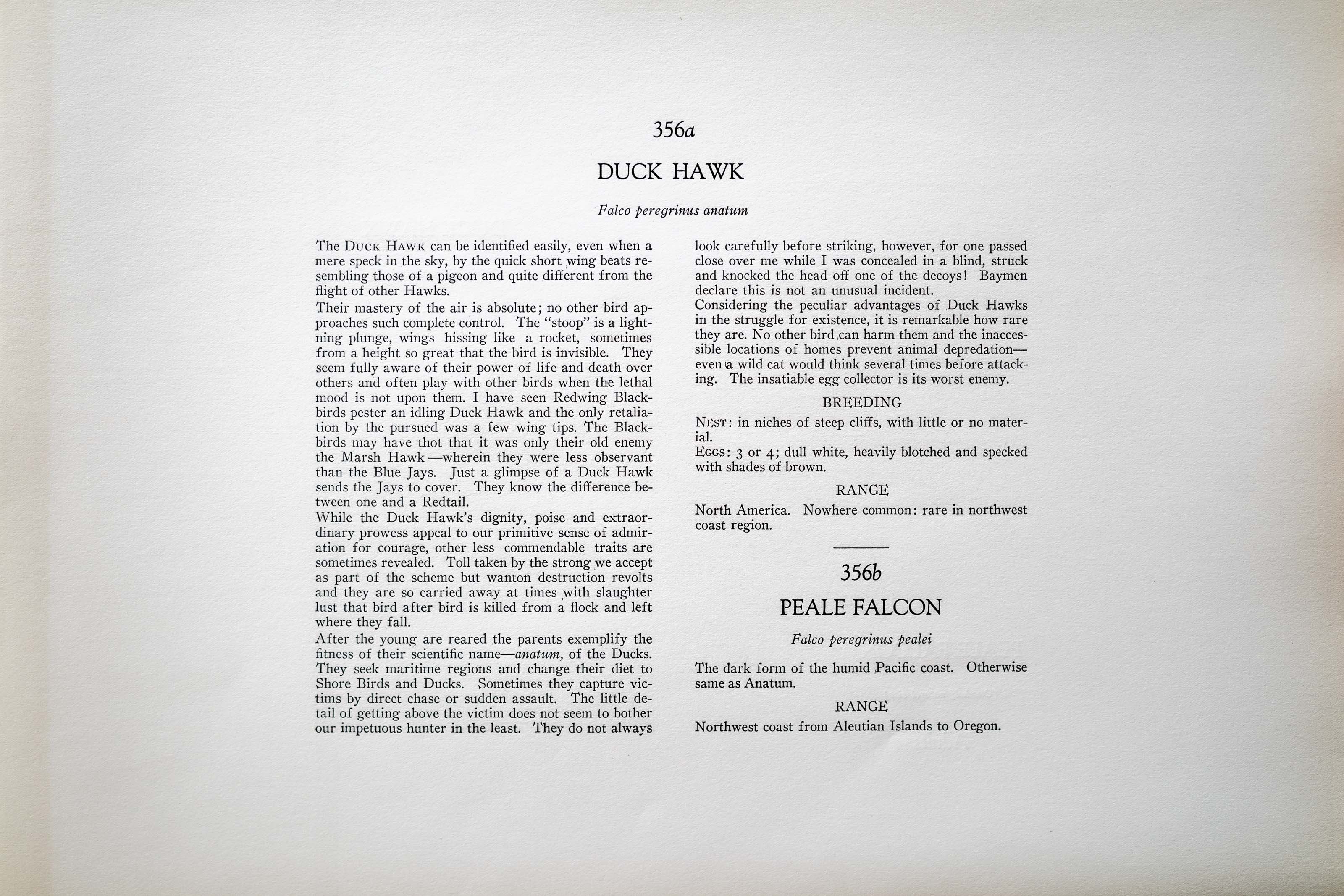

1916
1931
6
356a-356b
A team of dedicated board members, volunteers, and student interns has published every page in Volume 9. This volume includes 360 images of paintings and lyrical descriptions of birds, now available online for everyone to enjoy anywhere in the world. This is a monumental task. Each volume requires approximately 400 hours to photograph, edit, transcribe, catalog, and publish online. We need your support to complete this work.
If you're tech-savvy, have a good eye, are meticulous with details, and love structured data, please consider volunteering by emailing us at hello@rexbrasher.org.
We encourage all bird lovers and supporters to consider a monetary donation to support our mission to make Rex's work available for everyone. You can provide a one-time or recurring donation online.
The DUCK HAWK can be identified easily, even when a mere speck in the sky, by the quick short wing beats resembling those of a pigeon and quite different from the flight of other Hawks.
Their mastery of the air is absolute; no other bird approaches such complete control. The "stoop" is a lightning plunge, wings hissing like a rocket, sometimes from a height so great that the bird is invisible. They seem fully aware of their power of life and death over others and often play with other birds when the lethal mood is not upon them. I have seen Redwing Blackbirds pester an idling Duck Hawk and the only retaliation by the pursued was a few wing tips. The Blackbirds may have thot that it was only their old enemy the Marsh Hawk — wherein they were less observant than the Blue Jays. Just a glimpse of a Duck Hawk sends the Jays to cover. They know the difference between one and a Redtail.
While the Duck Hawk's dignity, poise and extraordinary prowess appeal to our primitive sense of admiration for courage, other less commendable traits are sometimes revealed. Toll taken by the strong we accept as part of the scheme but wanton destruction revolts and they are so carried away at times with slaughter lust that bird after bird is killed from a flock and left where they fall.
After the young are reared the parents exemplify the fitness of their scientific name — anatum, of the Ducks. They seek maritime regions and change their diet to Shore Birds and Ducks. Sometimes they capture victims by direct chase or sudden assault. The little detail of getting above the victim does not seem to bother our impetuous hunter in the least. They do not always look carefully before striking, however, for one passed close over me while I was concealed in a blind, struck and knocked the head off one of the decoys! Baymen declare this is not an unusual incident.
Considering the peculiar advantages of Duck Hawks in the struggle for existence, it is remarkable how rare they are. No other bird can harm them and the inaccessible locations of homes prevent animal depredation — even a wild cat would think several times before attacking. The insatiable egg collector is its worst enemy.
NEST: in niches of steep cliffs, with little or no material.
EGGS: 3 or 4; dull white, heavily blotched and specked with shades of brown.
North America. Nowhere common: rare in northwest coast region.
The dark form of the humid Pacific coast. Otherwise same as Anatum.
Northwest coast from Aleutian Islands to Oregon.